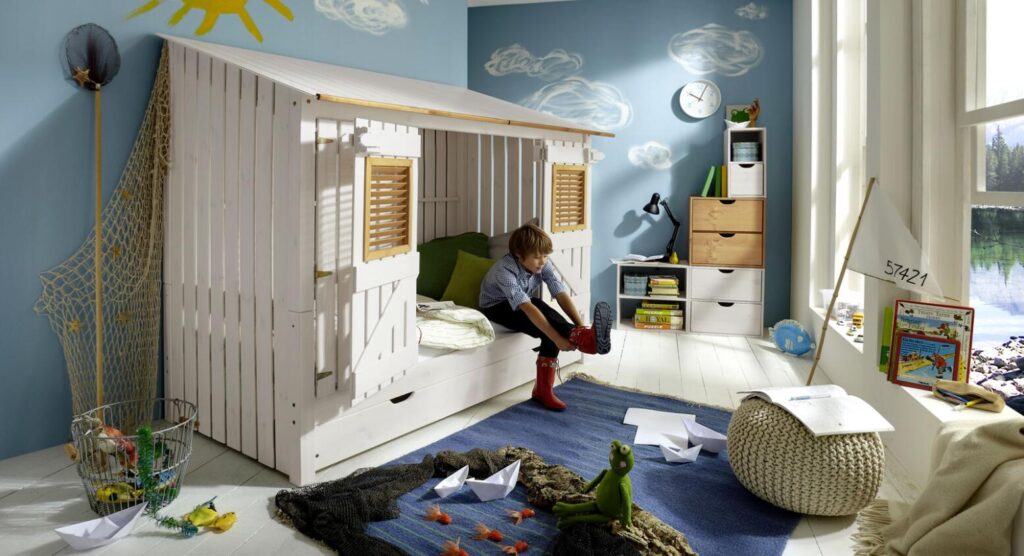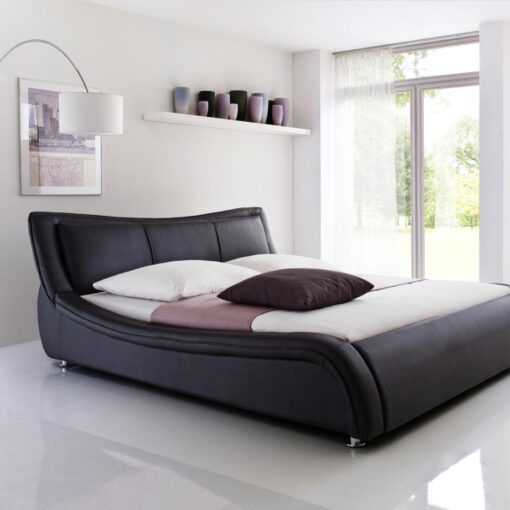Designing the various rooms in the apartment appealingly and furnishing them functionally is a pleasure for many people. When the first child is expected or a sibling is about to come into the house, the parents-to-be also usually have a certain nest-building instinct. Mum and dad particularly like to live this out when designing the baby room or children’s room.
Despite all the enthusiasm for designing children’s rooms, as an adult one should not forget that every child has their own personality and that they develop their own preferences and interests relatively quickly as they grow up. For this reason, it may make sense to hold back a little in the design of the children’s room in some places and to tread more neutral paths.
In the sleep magazine we have dealt in detail with the various aspects of children’s room design and give you a lot of tips and advice that can help you design the room for your offspring.
Which design for the children’s room?
If you take a closer look at the design of the children’s room, you quickly notice that there are many factors that play a role. First of all, there are questions about the right choice of color, the use of patterns and the use of textures:
What should you watch out for in the colors for the children’s room?
Colors already have a stimulating effect on babies. Studies have found that red is the first color an infant can see. When designing a room, you should be a little restrained with strong, bright colors. – A whole wall in deep red would quickly be too much for a baby. Here you should rather work with a neutral basic color and set accents in bright, strong colors to create a stimulating and friendly atmosphere.
As they grow up, the child will quickly decide for themselves which colors they like and which colors they categorically reject. This will then also be reflected in the color scheme of the children’s room.
When choosing wall and floor colors for the children’s room, it also makes sense to consider the location of the room or the lighting conditions in the children’s room. If the child’s room is in the south, z. B. cooler shades such as blue-gray or blue. In the case of a children’s room in a northern location, on the other hand, warm colors with a high proportion of yellow, orange or red should be used.
What is important in terms of patterns when designing a children’s room?
Babies like clear shapes and strong contrasts. For this reason, a completely neutrally designed room is not very appealing to you and hardly stimulating. So you should definitely include patterns in the room design of the children’s room. It is important not to overdo it.
Large (wall) areas can be set in scene, for example, by using classic, timeless patterns made of stripes or checks. If you have a preference for figurative patterns, it is better to only accommodate them in a small way in the room, so that a redesign can easily be made at any time if the pattern no longer pleases or you are simply tired of it.
Are textures important in the design of the children’s room?
For children, the haptics of the things they deal with play an important role. Children literally understand their world and this should also be taken into account when designing the children’s room. For example, it is important to know how soft or hard the flooring is, what kind of carpet is used or how the wallpaper is made.
What can you use to design the walls in the children’s room?
When it comes to wall design, one should be aware that the walls take up the largest area of a room. This means that the design of the walls in the children’s room is of crucial importance when it comes to the overall impression or the spatial effect.
Wall design in the children’s room with color
With paint, walls – as well as ceilings and wooden elements – can be designed relatively easily, quickly and inexpensively in the children’s room. Wall colors are available in almost every imaginable color and shade. In addition, there is a wide range of different effects, ranging from semi-gloss to high-gloss. If you are not sure which color will best fit the room, you can take or borrow color cards or color fans from a specialist shop or hardware store, in order to e.g. B. to look directly in the children’s room, how the local lighting conditions affect the favored colors. Or you can hold the color sample on any furniture you may have to check whether they fit together.




